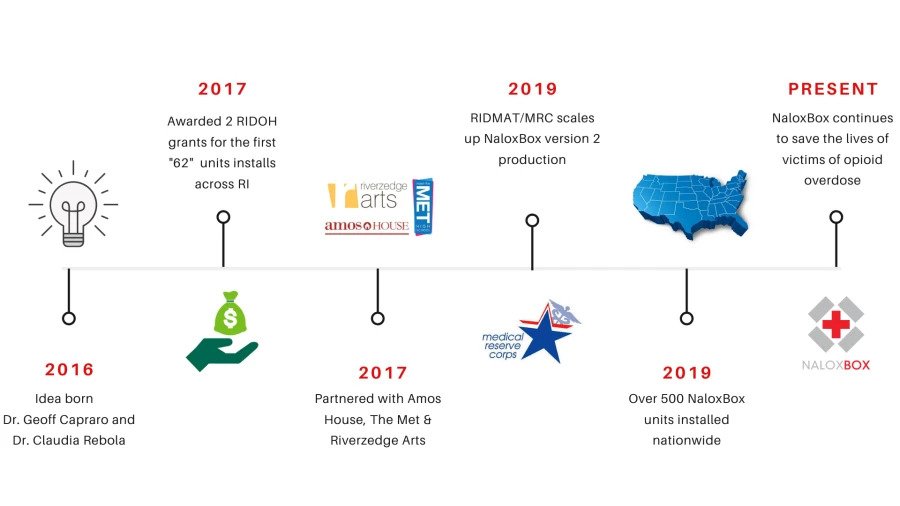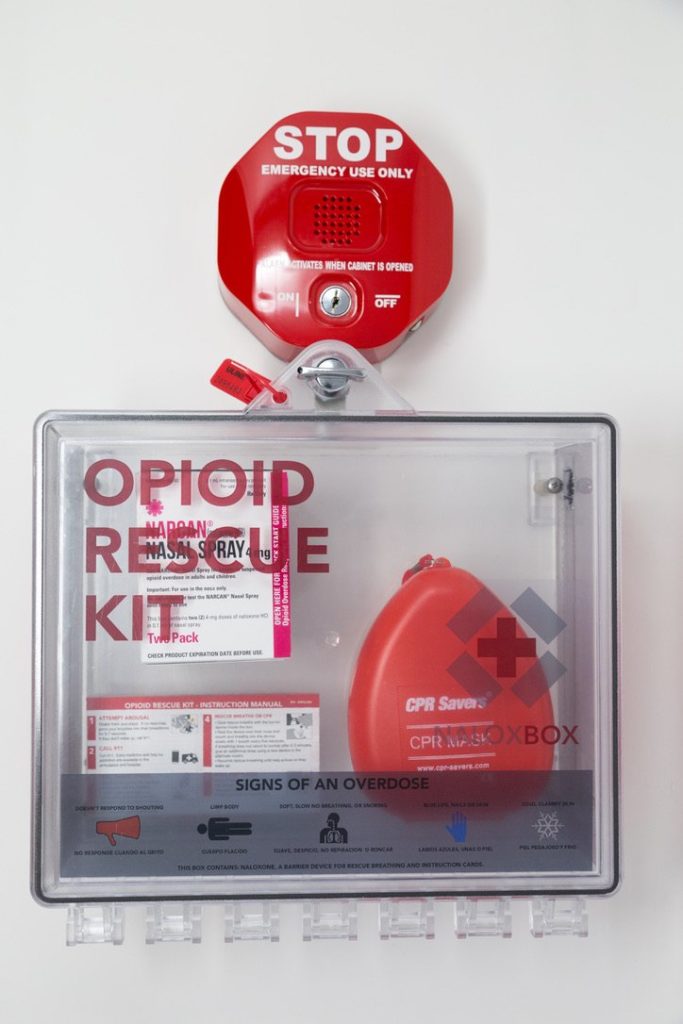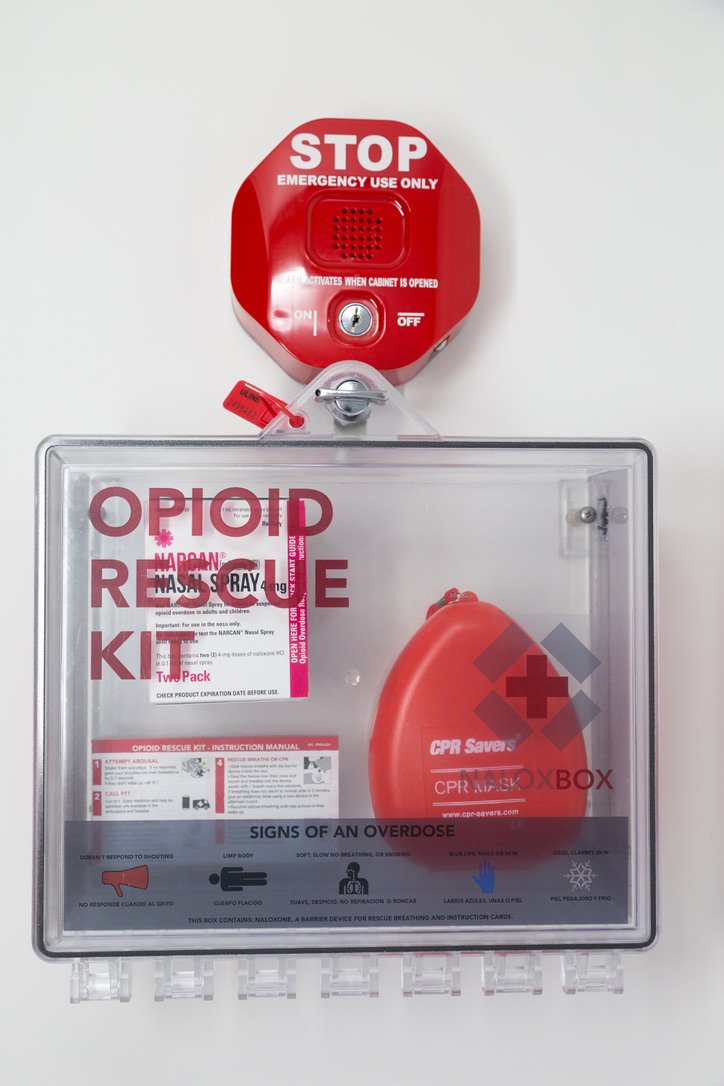The life saving non-profit at the forefront of the opioid epidemic
The opioid epidemic claims on average 130 lives every day; in the past year alone, 50,000 people have died of a preventable opioid overdose (1, 2). After assessing the need for a solution to the overwhelming impact of the opioid epidemic, Dr. Geoff Capraro and Dr. Claudia Rebola began work in 2016 on a resuscitation delivery box, the Nalox Box. The name of this box is derived from the drug naloxone, also known as Narcan, that works similarly to how epinephrine combats anaphylaxis.

Dr. Geoff Capraro, M.D., M.P.H., and Associate Professor of Emergency Medicine at the Warren Alpert Medical School of Brown University, described Nalox Box as “a rescue box that contains the resources you need to resuscitate someone who might have overdosed on an opioid drug such as heroin, oxycodone, hydrocodone, or percocet” (1). The speedy delivery of naloxone to the victim of overdose “knocks the opioid drug off of the receptors so that breathing is restored and people become aware and conscious again”; this re-establishes breathing and functionality of the vital organs (1). Nalox Box grants an opportunity for regular citizens to respond to overdoses before emergency personnel arrive.
Unfortunately, bystanders all too commonly react adversely to those suffering from drug addiction, as many do not care about the recovery or even wellbeing of those suffering from this life-altering disease. Dr. Capraro stresses that although drug addiction can impact the family of the person with the disease, these people should not be condemned or shunned. As part of Nalox Box’s continued mission, the not-for-profit project hopes to continue deterring stigma surrounding drug use and opioid overdose.

Dr. Capraro created Nalox Box because he hoped to make the antidote naloxone widely available to the general public, much in the same way that AEDs and fire extinguishers are, after seeing naloxone’s wide success in his field of Emergency Medicine. While the project was started by Dr. Capraro and Dr. Rebola, they have handed Nalox Box over to the Rhode Island Disaster Medical Assistance Team (RIDMAT), a non-profit organization that deals with opioid education and has trained all of the Rhode Island police officers in recognition of an overdose event. The first few installations of Nalox Box were in various locations throughout Rhode Island, but more than 800 Nalox Boxes are currently in distribution in over half of the states. At this moment, General Electric is working with Nalox box on supply chain and technological innovations.
When asked about how the first rescue made him feel, Dr. Capraro responded, “When we received the first report of a rescue, we were ecstatic. We had been working for a very long time on the design and seeking the grants and building [the Nalox Boxes] . . . It makes us feel really great” (1). Since this initial rescue, many more have been reported. Nalox Box hopes to eventually have a program to inform RIDMAT about how the boxes are being used. Dr. Capraro is applying for a grant through an opioid COBRE working with a drama therapist, a professional who uses drama to work through difficulties in the lives of their clients, on virtual vignettes about opioid overdose and rescue.
In the future, Nalox Box hopes to figure out the most effective ways to implement this public health intervention, and their five-year goal is to become an education and stigma reduction tool while distributing thousands of more boxes. Through an additional grant on the horizon, Nalox Box will be able to adeptly target boxes to communities that are suffering the most from opioid overdose deaths using Epidemiology, rather than hoping for people to discover Nalox Box by chance. Dr. Capraro believes that at its final stage, Nalox Box is an organization that “serves the communities that are suffering the most from overdose and serves as a vehicle for stigma reduction and the understanding of substance use as a treatable disease” (1). Dr. Capraro hopes to provide necessary intervention resources and prevent addiction early on.
Information about Nalox Box can be found at https://naloxbox.org/
– Oscar Capraro
References
- Capraro, G. (2020, October 12). Personal Interview.
- NaloxBox. (2020). Retrieved October 13, 2020, from https://naloxbox.org/
Images

